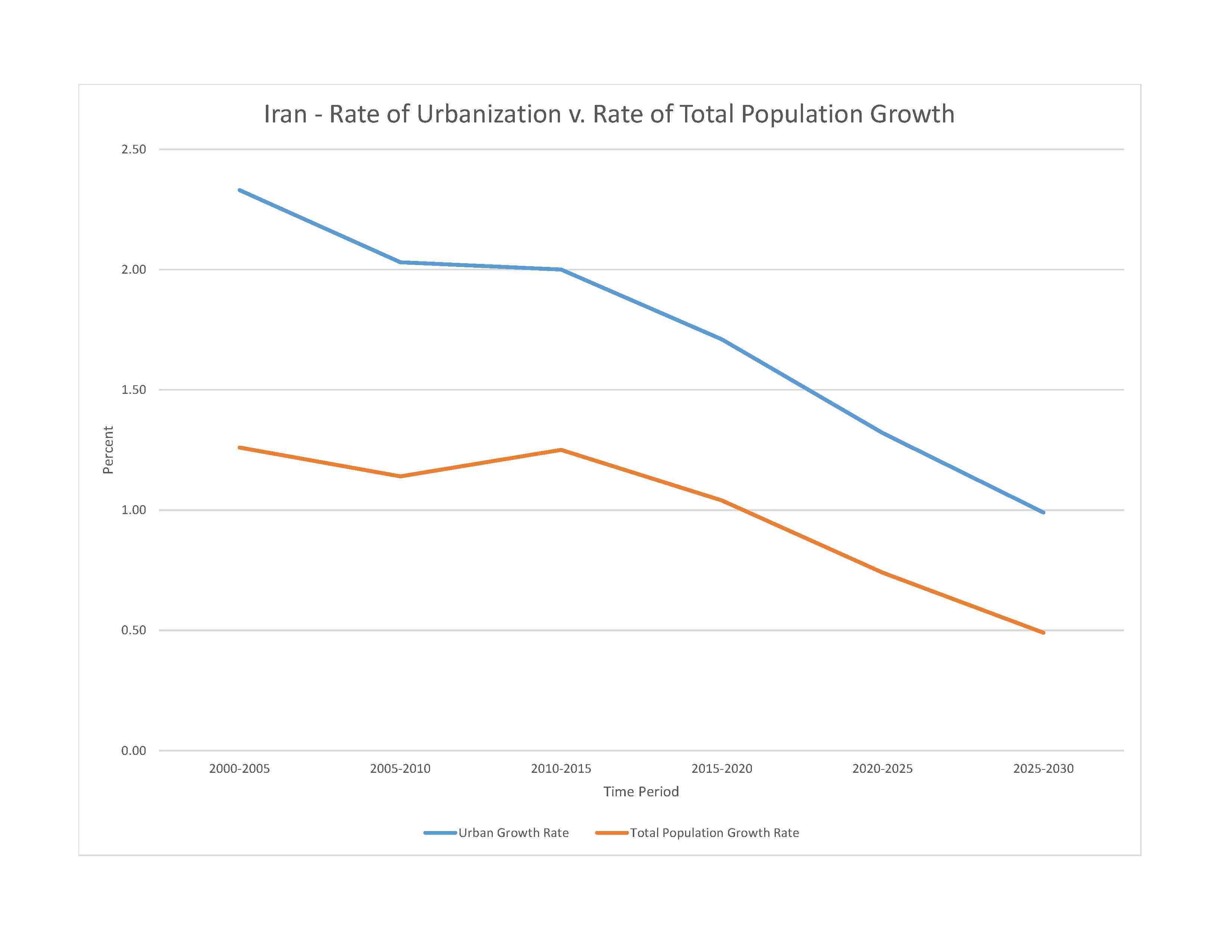
air pollution, especially in urban areas, from vehicle emissions, refinery operations, and industrial effluents; deforestation; overgrazing; desertification; oil pollution in the Persian Gulf; wetland losses from drought; soil degradation (salination); inadequate supplies of potable water; water pollution from raw sewage and industrial waste; urbanization
party to: Biodiversity, Climate Change, Climate Change-Kyoto Protocol, Desertification, Endangered Species, Hazardous Wastes, Marine Dumping-London Convention, Marine Dumping-London Protocol, Nuclear Test Ban, Ozone Layer Protection, Ship Pollution, Wetlands
signed, but not ratified: Climate Change-Paris Agreement, Comprehensive Nuclear Test Ban, Environmental Modification, Law of the Sea, Marine Life Conservation
mostly arid or semiarid, subtropical along Caspian coast
agricultural land: 30.1% (2018 est.)
arable land: 10.8% (2018 est.)
permanent crops: 1.2% (2018 est.)
permanent pasture: 18.1% (2018 est.)
forest: 6.8% (2018 est.)
other: 63.1% (2018 est.)
urban population: 77.3% of total population (2023)
rate of urbanization: 1.32% annual rate of change (2020-25 est.)

0.01% of GDP (2017 est.)
0.01% of GDP (2017 est.)
particulate matter emissions: 31.62 micrograms per cubic meter (2019 est.)
carbon dioxide emissions: 661.71 megatons (2016 est.)
methane emissions: 158.71 megatons (2020 est.)
municipal solid waste generated annually: 17.885 million tons (2017 est.)
municipal solid waste recycled annually: 894,250 tons (2017 est.)
percent of municipal solid waste recycled: 5% (2017 est.)
salt water lake(s): Caspian Sea (shared with Russia, Azerbaijan, Turkmenistan, and Kazakhstan) - 374,000 sq km; Lake Urmia - 5,200 sq km; Lake Namak - 750 sq km
Euphrates (shared with Turkey [s], Syria, and Iraq [m]) - 3,596 km; Tigris (shared with Turkey, Syria, and Iraq [m]) - 1,950 km; Helmand (shared with Afghanistan [s]) - 1,130 km
note – [s] after country name indicates river source; [m] after country name indicates river mouth
Indian Ocean drainage: (Persian Gulf) Tigris and Euphrates (918,044 sq km)
municipal: 6.2 billion cubic meters (2020 est.)
industrial: 1.1 billion cubic meters (2020 est.)
agricultural: 86 billion cubic meters (2020 est.)
137.05 billion cubic meters (2020 est.)
total global geoparks and regional networks: 3
global geoparks and regional networks: Aras; Qeshm Island; Tabas (2023)
NOTE: The information regarding Iran on this page is re-published from the 2024 World Fact Book of the United States Central Intelligence Agency and other sources. No claims are made regarding the accuracy of Iran 2024 information contained here. All suggestions for corrections of any errors about Iran 2024 should be addressed to the CIA or the source cited on each page.
This page was last modified 04 May 24, Copyright © 2024 ITA all rights reserved.